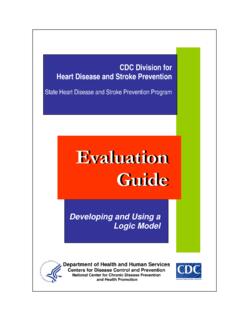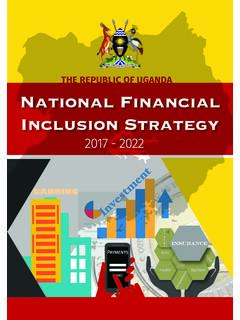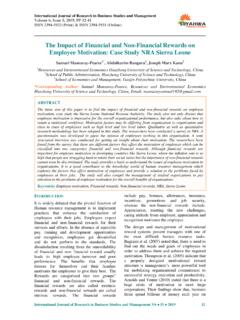Transcription of College Students and Financial Distress: Exploring Debt ...
1 2013 Association for Financial Counseling and Planning Education . All rights of reproduction in any form mental health has recently become a growing topic of interest among researchers. However, practition-ers have long been encountering clients who have finan-cial problems that impact their cognitive, emotional, and relational well-being. The most recent research on the topic of Financial mental health has been related to finan-cial disorders and money scripts (Klontz, Britt, Archuleta, & Klontz, 2012; Klontz, Britt, Mentzer, & Klontz, 2011; Klontz, Kahler, & Klontz, 2008). Financial disorders that have been identified to date include: a) Financial enabling, b) compulsive buying disorder, c) compulsive hoard-ing, d) pathological gambling, e) workaholism, f) finan-cial dependence, g) Financial infidelity, and h) Financial enmeshment (Klontz et al.
2 , 2008; Klontz et al., 2011). Financial stress and anxiety can also be seen as aspects of Financial mental health. Although sparse, research has linked Financial stress and anxiety with College student debt (Grable & Joo, 2006; Joo, Grable, & Bagwell, 2003; Norvilitis et al., 2006; Perna, 2008). The current study explained the existing literature related to Students finan-cial mental health. More specifically, the purpose of the study was to explore the associations of Students Financial anxiety, in particular the influence of Students and Financial Distress: Exploring Debt, Financial Satisfaction, and Financial AnxietyKristy L.
3 Archuleta, Anita Dale, and Scott M. SpannThe impact of Financial concerns on overall mental health has become a popular topic among researchers and practitioners. In this exploratory study, possible associations of Financial anxiety were explored using a sample of 180 College Students who sought services at a university peer Financial counseling center in a Midwestern state. Of particular interest was the influence of debt on student Financial anxiety. To measure Financial anxiety, a new scale was developed, the Financial Anxiety Scale (FAS), that can be used as a tool for Financial planners, counselors, and educators to identify individuals who are experiencing increased levels of Financial distress that may call for a referral to an appropriate professional.
4 Results from two hierarchical regressions indicated that Financial satisfaction, student loans, and gender are associated with Financial Words: Financial anxiety, Financial counseling, Financial satisfaction, Financial scale, student debtKristy L. Archuleta, , LMFT, Editor, Journal of Financial Therapy, Associate Professor, Personal Financial Planning, School of Family Studies and Human Services, Kansas State University, 316 Justin, Manhattan, KS 66506, (785) 532-1474, Dale, Candidate, Kansas State University, 3283 E 425 N, Lebanon, IN 46052, M. Spann, CFP , Kansas State University, 316 Justin, Manhattan, KS 66506, (785) 532-1474, ReviewThe period of young adulthood is commonly associated with an increased risk of mental health problems (Hunt & Eisenberg, 2010; Zivin, Eisenberg, Gollust, & Golber-stein, 2009).
5 It is also a period of significant life transition typically marked by an increase in Financial responsibility. A review of existing literature on debt and mental health of College Students suggested there should be an increased focus on the study of Financial and psychological well-being of College Students . Roberts et al. (2000) identi-fied a link between adverse Financial situations of College Students and the negative impact on mental and physical health. Andrews and Wilding (2004) found that Financial stressors were positively associated with increased anx-iety and depression levels among College Students in the United Kingdom.
6 Financial stress has also been linked to academic performance (Joo, Durband, & Grable, 2008). Another study of British university Students found that poor mental health status was related to Financial stressors such as having difficulty paying bills on time (Roberts, Golding, Towell, & Weinreb, 1999). In addition, Students who considered leaving their academic programs prior to finishing due to Financial strain reported poorer psycholog-ical health. Research has indicated a moderate association between debt and mental health problems such as anxiety Journal of Financial Counseling and Planning 51and depression (Drentea, 2000; Jenkins et al.)
7 , 2008; Rob-erts et al., 1999). Furthermore, debt has been associated with a decreased sense of Financial well-being and higher reported levels of overall stress (Norvilitis et al., 2006).DebtCollege Students encounter a series of complex Financial decisions as they determine how to fund their College education (Goetz, Cude, Nielsen, Chatterjee, & Mimura, 2011). Student loans and credit cards have been the two major types of debt receiving attention in scholarly lit-erature pertaining to College Students . According to the College Board (2011), the cost of pursuing higher edu-cation continues to outpace inflation, with the 2011-2012 published total cost of tuition, fees, and room and board averaging $17,131 for an in-state public institution and $28,500 for private colleges and universities.
8 The Project on Student Debt (2011) estimated that two thirds of College seniors from the Class of 2010 who graduated with student loan debt had an average debt load of over $25,000. A 2008 study by Perna found that Students from mid- and low-resource schools had deep concerns about borrowing to pay for school, seeing school loans as debt rather than an investment in future earnings. These findings were con-sistent with those by Callendar and Jackson (2008) who found British Students avoided College debt by selecting colleges close to home and in low cost of living areas as well as locations that offer employment opportunities.
9 A similar study by Mangan, Hughes, Davies, and Slack (2010) found a significant association between fear of debt and location as being positively associated with university selection in Great Britain. Fenske, Porter, and DuBrock (2000) found that federal Financial aid is the major source of Financial assistance among American College Students . O Brien and Shedd (2001) reported that student loans were the most common source of aid for low-income Students . However, Financial aid is most often not enough to offset Students Financial needs. In these cases, Students often turn to credit cards to pay the difference (Nora, Barlow, & Crisp, 2006).
10 Much of the Financial literature pertaining to College stu-dents is related to credit card usage and Students attitudes and behaviors. In 2001, Henry, Weber, and Yarbrough stated that Students were on the brink of a Financial disaster due to credit card debt and poor Financial management behaviors, such as the lack of a budget. Joo, Grable, and Bagwell (2003) confirmed Henry et al. s (2001) assertion and found that credit card debt was positively related to negative Financial behaviors and Financial stress. In addi-tion, they found that the majority of Students thought it was acceptable to borrow money to pay for school-related items, costs related to illness, and living expenses.














